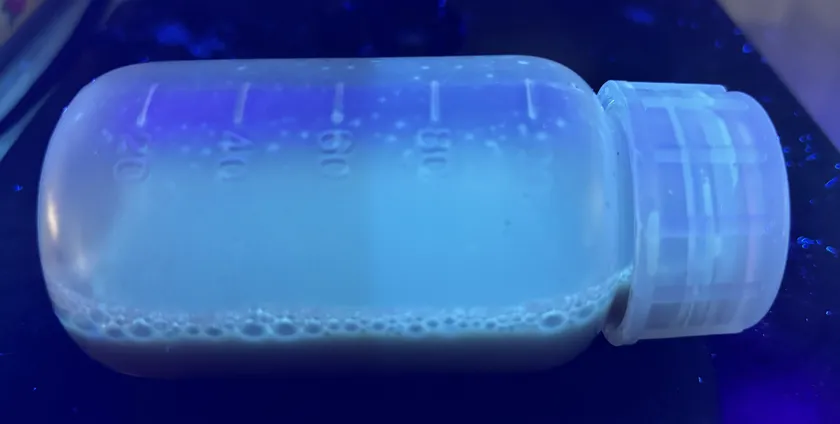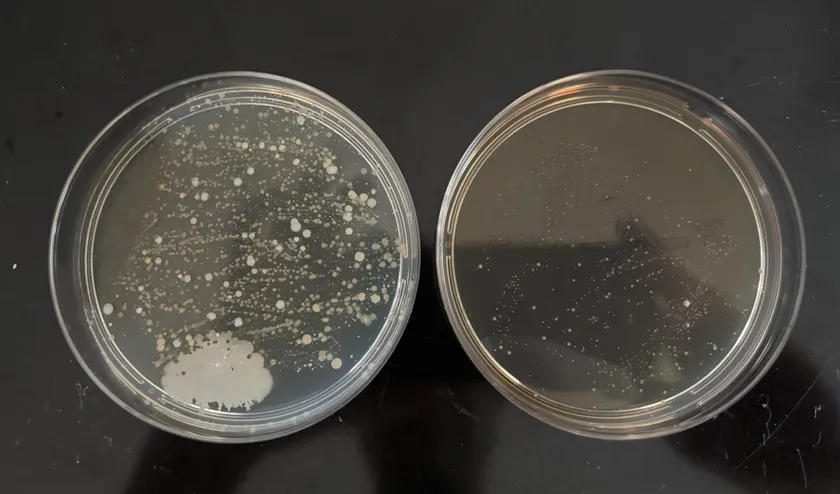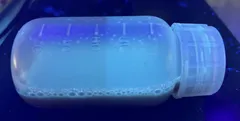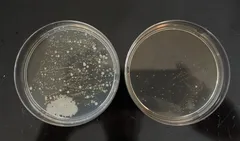From biomass resource wastes such as waste wood, waste paper, and orange peels Green Science Alliance Develops Quantum Dot Antimicrobial Agent
GSアライアンス株式会社
Dr. Ryohei Mori (Engineering) of Green Science Alliance Corporation, which researches and develops cutting-edge technologies for building a decarbonized, carbon-neutral society, has developed a quantum dot antimicrobial agent from biomass resource waste such as waste wood, waste paper, and orange peels.
Antibacterial agents are drugs used in the treatment of bacterial infections. Substances that affect bacteria include antibiotics, probiotics, bacteriophages, antimicrobial peptides, and nanomaterials. Compared to antibiotics that are chemically synthesized, synthesized from microorganisms, or synthesized from natural products, nanomaterials and nanoparticles may interact more strongly with bacteria than these conventional antibiotics. This is because nanoparticles are more likely to interact with and penetrate the cell walls and membranes of bacteria due to their ultra-small size (a few nanometers) and the presence of functional groups on their surfaces. From this perspective, it is known that nanoparticles such as copper and silver have antimicrobial effects, but there are issues such as cost.
By the way, quantum dots are state-of-the-art materials with ultra-fine structures on a single nanoscale (0.5 to 9 nm) with optical properties that follow quantum chemistry and quantum mechanics. The number of atoms and molecules per quantum dot is said to range from several atoms to several thousand, which is also referred to as artificial atoms and molecules. When a material reaches this size, due to a physicochemical effect called quantum confinement, the electronic energy levels in the quantum dot are separated instead of continuous, and the emission wavelength by photoexcitation depends on the size of the quantum dot. This is a cutting-edge material that has been nominated for the Nobel Prize in 2023.
GS Alliance has been synthesizing various types of quantum dots and quantum dot composite materials, and now Dr. Ryohei Mori (Dr. Eng.) of GS Alliance has developed a quantum dot antimicrobial agent from plant and biomass wastes such as waste wood, waste paper, and orange peels. Compared to the above-mentioned nanoparticles such as silver and copper, the quantum dot antimicrobials are more cost-effective because they are made from biomass wastes. The quantum dots synthesized from waste biomass resources are carbon-based quantum dots and organic quantum dots, and these quantum dots adhere to the cell walls and membranes of bacteria, then enter the cells of bacteria, causing gene mutation and reactive oxygen species, resulting in the destruction of bacteria, which is said to be the cause of antimicrobial activity. The resultant effect is the destruction of the bacteria, which is said to be the cause of its antimicrobial properties. Other effects also seem to include inhibiting the activity of bacterial enzymes, preventing the production of peptidoglycan by the bacteria, and damaging the bacteria. On the other hand, such quantum dots may also reflect the antimicrobial properties of the raw materials, such as flavonoids, polyphenols, alkaloids, catechins, terpenoids, and saponins in plants, since some of these properties are inherited from the raw materials. Furthermore, when applied to agriculture, for example, when irradiated by sunlight in fields, excited electrons, excitons, and reactive oxygen species are generated, which have antibacterial and antiviral effects similar to those of photocatalysts.
On the other hand, the emergence of dangerous multidrug-resistant bacteria has recently become a problem due to the long-standing use of general-purpose antibiotics, and some research reports indicate that multidrug-resistant bacteria are unlikely to emerge if this type of carbon-based quantum dot is considered as an antibacterial agent.
It can be assumed that the quantum dot antimicrobial material in this case also has antiviral and antifungal properties, which we plan to confirm in the future. It may become a natural, plant-derived antibacterial, antifungal, and antiviral agent that can replace alcohol and sodium hypochlorite, which have been frequently used in the fight against the new coronavirus.
The GS Alliance plans to explore the application of this quantum dot antimicrobial agent as a natural antimicrobial, antifungal, and antiviral agent, as well as an agrochemical.

Quantum dots synthesized from orange peel (under UV irradiation)

Antimicrobial test (left) without antimicrobial material (right) with quantum dot antimicrobial material synthesized from waste wood
Company Profile
Company name: GS Alliance Corporation (Fuji Pigment Co., Ltd. group)
Representative: Dr. Ryohei Mori, President (Engineering)
Head office: 2-22-11 Kohana, Kawanishi City, Hyogo Prefecture, 666-0015, Japan
Business description: Carbon neutral, decarbonization, environment to tackle SDGs issues,
Research and development of cutting-edge technologies in the environmental and energy fields that address carbon neutrality, decarbonization, and SDGs issues.
(Adopted by UNOPS GIC KOBE, a UN start-up company support program
UNOPS GIC KOBE, a UN start-up support program)
- Category:
- Technology & Development


